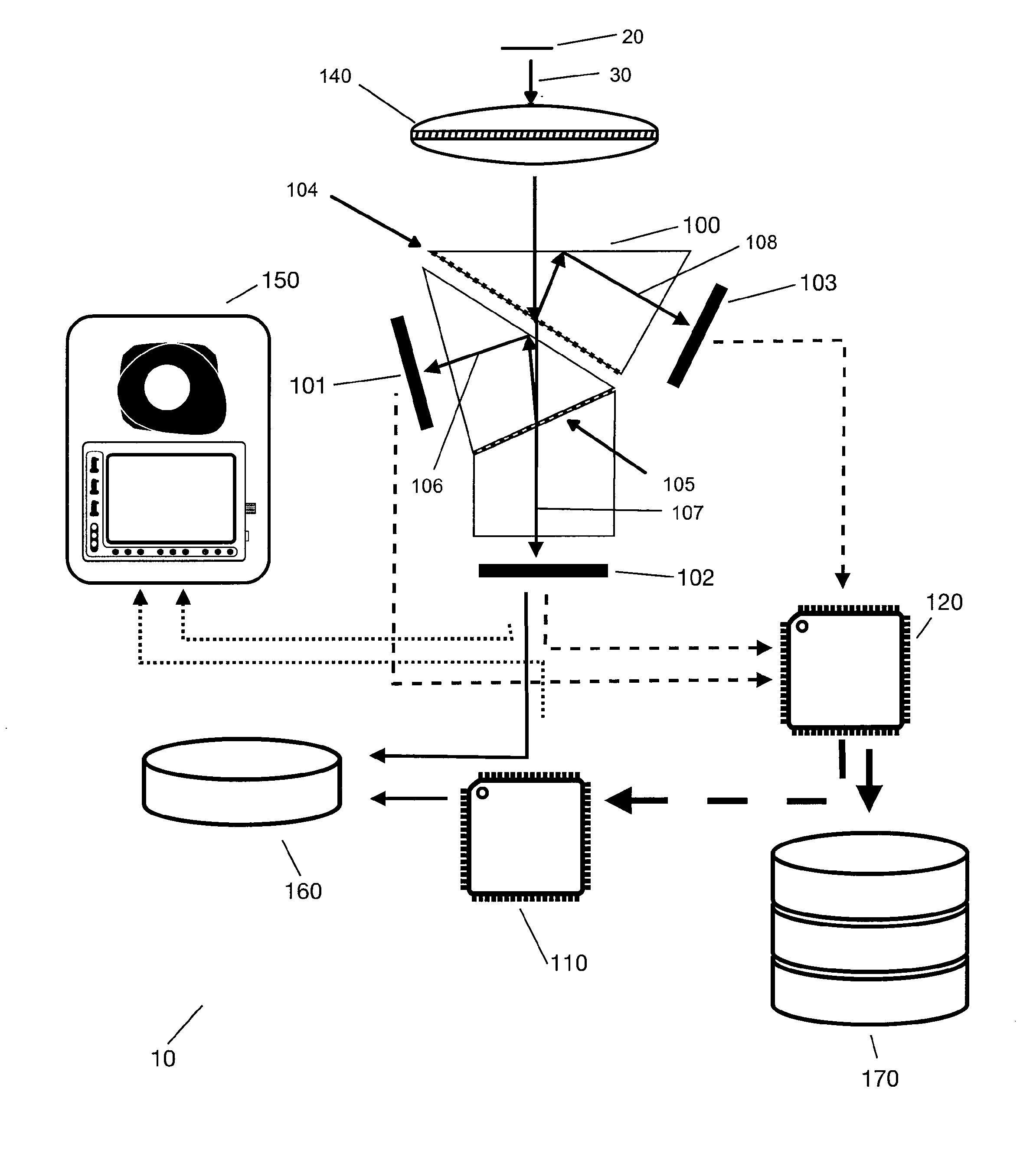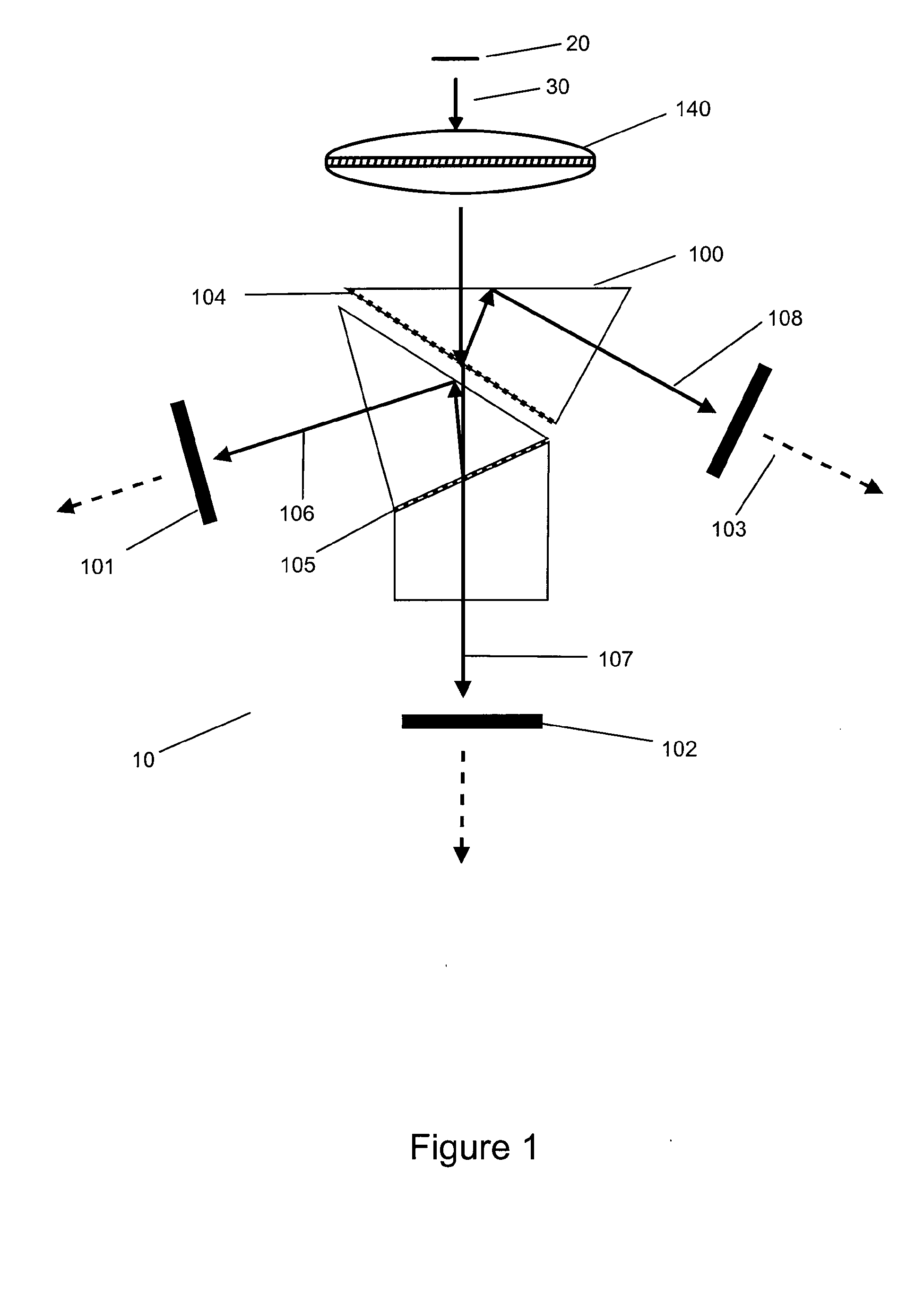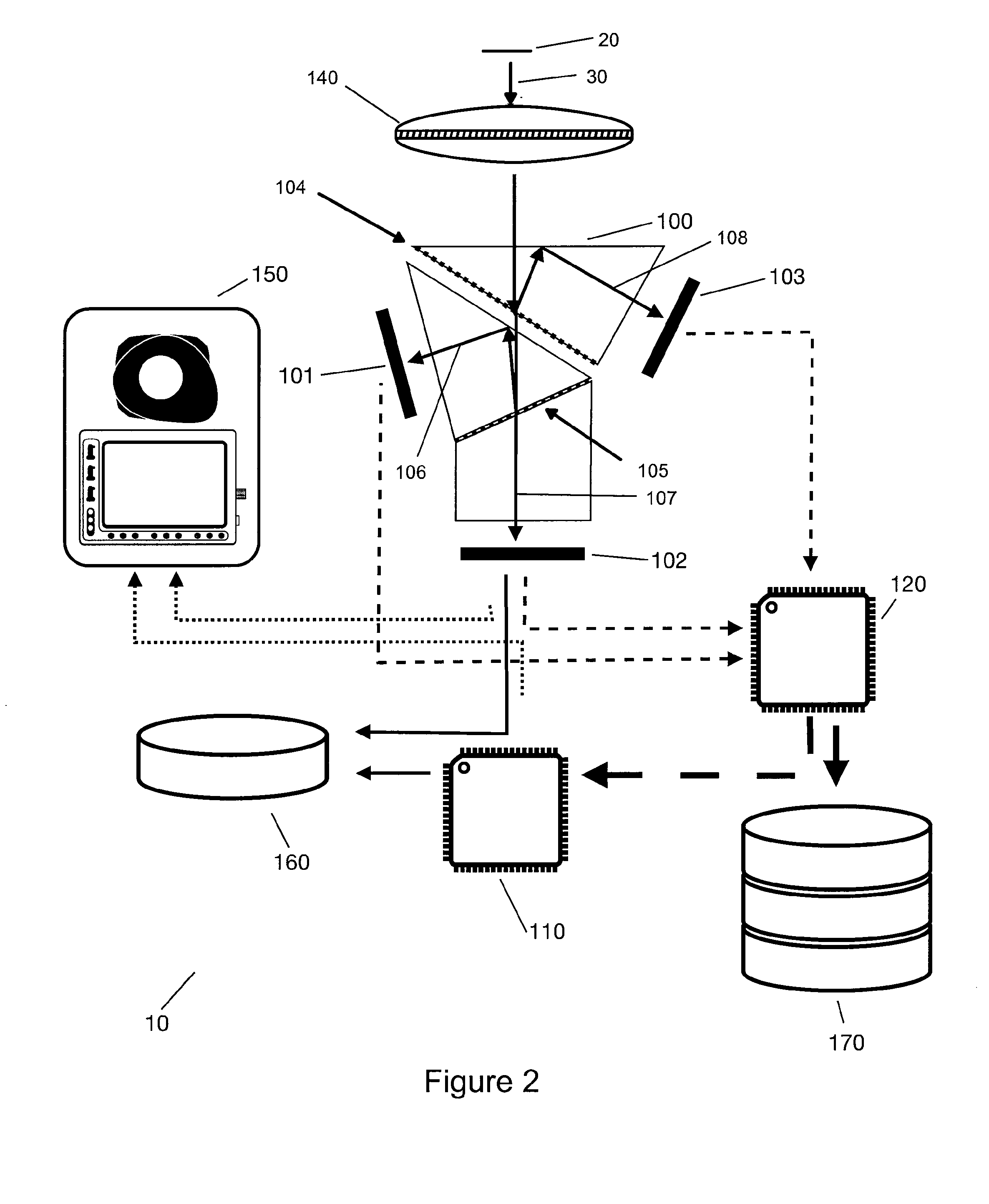Temporally Aligned Exposure Bracketing for High Dynamic Range Imaging
a technology of dynamic range and exposure bracketing, applied in the field of imaging systems, can solve the problems of not being able to solve the problem of point and shoot cameras, computer algorithms, and not being able to solve the problem of normal exposure or even a digitally enhanced exposure, and not being able to resolve all image areas
- Summary
- Abstract
- Description
- Claims
- Application Information
AI Technical Summary
Benefits of technology
Problems solved by technology
Method used
Image
Examples
Embodiment Construction
[0050]The optical imaging system of the present invention provides an improvement to high dynamic range imaging, and assemblies therefore, that allows temporally aligned exposure bracketing. The system is simple, elegant, leverages existing technologies, allows for motion capture with no temporal distortion, and is relatively inexpensive to implement.
[0051]The present optical imaging system allows the user to capture light with confidence that the under and over exposed regions in the image will be imaged properly. The user simply captures all the available light with and image capturing device, and determines later how to map that information to the output device. With the optical imaging system the user can create stunning imagery that is otherwise impossible to capture, even with the most sophisticated of the current generation of normal photography equipment.
[0052]Before the present invention is described in greater detail, it is to be understood that this invention is not limit...
PUM
 Login to View More
Login to View More Abstract
Description
Claims
Application Information
 Login to View More
Login to View More - R&D
- Intellectual Property
- Life Sciences
- Materials
- Tech Scout
- Unparalleled Data Quality
- Higher Quality Content
- 60% Fewer Hallucinations
Browse by: Latest US Patents, China's latest patents, Technical Efficacy Thesaurus, Application Domain, Technology Topic, Popular Technical Reports.
© 2025 PatSnap. All rights reserved.Legal|Privacy policy|Modern Slavery Act Transparency Statement|Sitemap|About US| Contact US: help@patsnap.com



